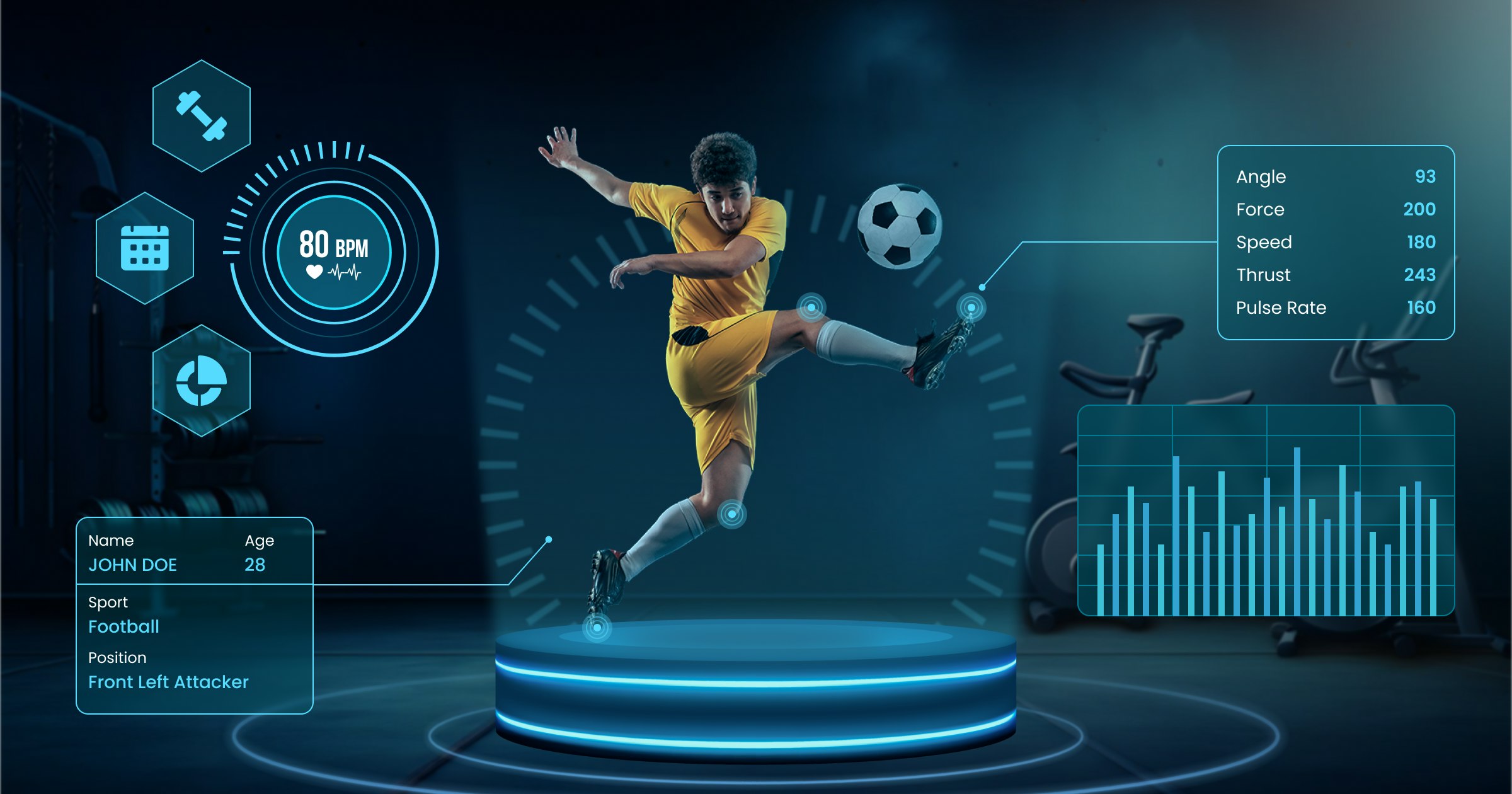Blog
“The Role of Technology in Modern Sports Tools”
In the fast-evolving world of sports, technology has transformed how athletes train, perform, and recover. From precision performance tracking to injury prevention, the integration of technology into sports tools has revolutionized the way we approach physical activities. These advancements not only enhance the experience for professional athletes but also improve accessibility and efficiency for amateurs and recreational players. Here’s a deep dive into how technology is shaping modern sports tools and what that means for athletes of all levels.
1. Performance Analytics: Data-Driven Training
One of the most significant impacts of technology in sports is the ability to capture and analyze performance data. Wearable devices, sensors, and smart sports equipment provide athletes with real-time data that help improve performance, track progress, and make data-backed adjustments to training routines.
Examples:
- Smart Shoes and Clothing: Wearable sensors integrated into shoes or clothes measure things like stride length, cadence, heart rate, and body temperature. This data can be synced with apps to help athletes track their improvements over time and adjust their training accordingly.
- Smart Balls: In sports like football, basketball, or tennis, smart balls are equipped with sensors that track speed, trajectory, spin, and other critical metrics. This technology provides immediate feedback on performance and technique.
- Fitness Trackers: Devices like Fitbit, Apple Watch, and Garmin watch track key metrics such as heart rate, calories burned, sleep quality, and more. They help athletes understand their physical limits and monitor their fitness levels.
Impact:
- Increased Precision: The ability to analyze data down to minute details has led to more precise training, allowing athletes to fine-tune their movements and techniques.
- Customized Coaching: Data-driven insights allow for personalized coaching, helping athletes identify their strengths and weaknesses and focus on areas that need improvement.
- Motivation and Progress Tracking: Constant feedback and performance tracking boost motivation and enable athletes to set and reach specific goals.
2. Injury Prevention: Technology That Protects Athletes
Technology is also making sports safer by helping prevent injuries. From high-tech wearables that monitor fatigue to helmets designed to reduce the impact of head injuries, modern sports tools are becoming increasingly focused on safety.

Examples:
- Smart Helmets: Used in sports like football and hockey, smart helmets are equipped with sensors that measure the force of impacts. These helmets can alert medical staff if the athlete sustains a hit that might lead to a concussion or other brain injury.
- Wearable Sensors for Biomechanics: Devices that monitor movement and muscle activity can detect early signs of fatigue or improper biomechanics, helping athletes adjust their movements to prevent injury.
- Compression Gear: Technology-integrated compression garments use heat or vibration therapy to stimulate blood flow and reduce muscle soreness. These garments are commonly used to prevent muscle strain and help with recovery.
Impact:
- Proactive Injury Prevention: By monitoring key factors like fatigue and biomechanics, technology can warn athletes and coaches of potential risks before they lead to injuries.
- Faster Recovery: Recovery technologies, such as cryotherapy devices and electronic muscle stimulators, help athletes recover faster and get back to peak performance quicker.
- Safer Training: With real-time feedback on technique and fatigue, athletes are less likely to push their bodies beyond safe limits, reducing the chance of strain or overuse injuries.
3. Enhanced Equipment: Smart Tools for Better Performance
Technology has also revolutionized the equipment used in sports. From tennis rackets to golf clubs, modern sports gear is designed to give athletes a competitive edge, blending traditional craftsmanship with technological innovation.
Examples:
- Smart Golf Clubs: Equipped with sensors, smart golf clubs track swing speed, ball speed, launch angle, and spin rates. This data helps golfers refine their technique and improve their game.
- Performance-Enhancing Tennis Rackets: Advanced rackets with sensors can track the force of impact, spin, and shot accuracy. The data can help players optimize their swings and adjust their technique for better control and power.
- High-Tech Shoes: In sports like running or basketball, shoes equipped with sensors monitor foot strike, arch support, and pressure distribution. These features help athletes improve their form, reduce injuries, and increase efficiency.
Impact:
- Optimized Performance: With real-time feedback, athletes can adjust their techniques for better efficiency and precision, allowing them to perform at their peak.
- Customization: Many modern sports tools are designed to be customizable, allowing athletes to adjust settings to match their personal needs and playing style.
- Increased Comfort and Durability: Advances in materials and design have led to lighter, more comfortable, and longer-lasting equipment, improving the overall experience for athletes.
4. Virtual and Augmented Reality: Revolutionizing Training and Coaching
Virtual Reality (VR) and Augmented Reality (AR) have made a significant impact in sports training. These technologies offer immersive experiences that can help athletes practice specific skills, visualize plays, and enhance their understanding of the game without physically being on the field.
Examples:
- VR Training Simulators: VR systems that simulate real game scenarios are being used by athletes to practice and perfect their reactions, decision-making, and overall strategy. These simulators provide a risk-free environment for athletes to rehearse specific situations they might face in a game.
- AR for Coaching: Coaches are using AR to overlay information such as player movements, statistics, and game strategies onto the real-world environment. This helps both coaches and players better understand performance and areas for improvement.
- Skill Development in Sports: VR and AR technology are being used to help athletes improve specific skills such as reaction time, vision, and mental focus. For example, baseball players can use VR to simulate pitching scenarios and practice hitting without needing a physical pitcher.
Impact:
- Immersive Learning: Athletes can simulate game situations in a controlled environment, giving them valuable practice time and helping them prepare mentally for high-pressure scenarios.
- Enhanced Training Efficiency: With VR and AR, athletes can focus on particular aspects of their performance without the need for physical equipment or opponents, making training more efficient.
- Advanced Visualization: By visualizing different game scenarios or strategies in real-time, athletes can develop a deeper understanding of their sport and make better decisions during actual competitions.
5. Smart Stadiums and Fan Engagement: Enhancing the Spectator Experience
Technology isn’t just improving performance on the field—it’s also transforming how fans experience sports. From interactive stadiums to mobile apps that provide real-time stats, technology is making the fan experience more immersive and engaging than ever before.

Examples:
- Smart Stadiums: Equipped with Wi-Fi, mobile charging stations, and interactive displays, smart stadiums allow fans to access instant replays, real-time statistics, and other features to enhance the viewing experience.
- Mobile Apps: Fans can now access team updates, live scores, and ticketing options directly through their smartphones. Some apps also feature virtual experiences that bring fans closer to the action, such as live-streaming games or exclusive behind-the-scenes footage.
- Augmented Reality: AR apps are allowing fans to interact with the game in new ways, such as pointing their phones at the field to view stats on players or even watching 360-degree replays.
Impact:
- Enhanced Fan Engagement: Technology keeps fans engaged during the game by providing them with real-time statistics, interactive content, and exclusive experiences.
- Convenience: Smart stadiums and apps streamline the fan experience, making it easier to purchase tickets, order food, and access amenities during the game.
- Immersive Viewing: AR and VR give fans a unique, interactive view of the game, creating a richer, more exciting experience.
Conclusion
Technology has played a pivotal role in the evolution of sports tools, providing athletes with an unprecedented ability to optimize performance, prevent injuries, and enhance their training. From wearable sensors and smart equipment to VR coaching and injury-prevention wearables, these innovations are reshaping how athletes and teams approach competition. For fans, the experience is also transforming with new ways to engage with the game, making sports more accessible and immersive than ever. As technology continues to advance, we can only expect more exciting innovations that will continue to push the boundaries of sports performance and fan engagement.


